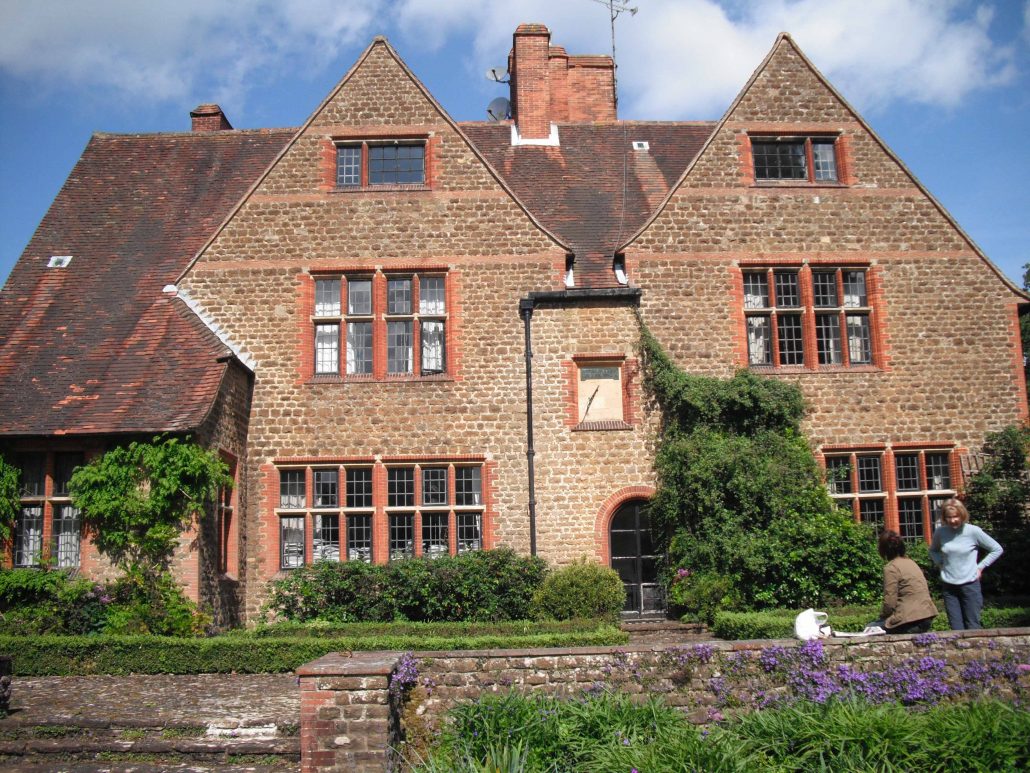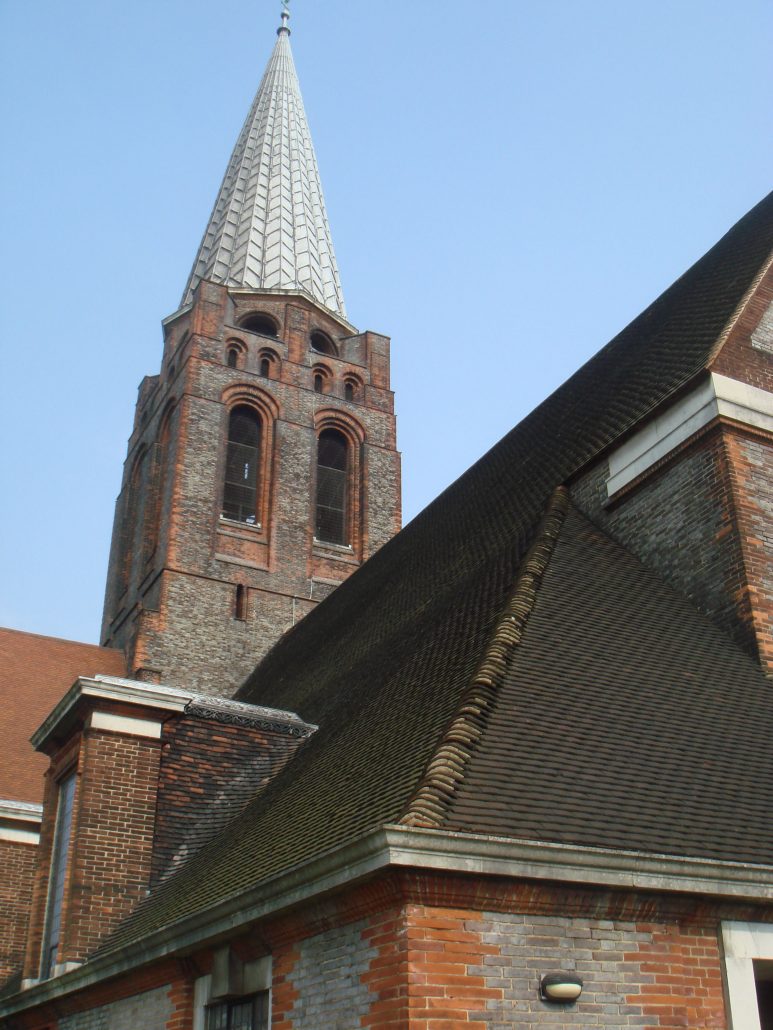Tigbourne Court © The Lutyens Trust Photographic Archive
St Jude’s Church © David Lewis, The Lutyens Trust Photographic Archive
Tigbourne Court’s Secluded Setting Under Threat and St Jude’s Church in Need of Urgent Repairs
A report by Anthony Richardson
Tigbourne Court, built from 1899 to 1901, is one of Lutyens’s most finely crafted elevations. It’s a tour de force of Bargate stone, galleted with ferrestone (sometimes called ironstone, which is much used in Kent and Surrey churches), with red-tiled string courses uniting the whole elevation. The front of this Grade I-listed house stands close to the road from Guildford to Petworth, and has a secluded, Jekyll-designed walled garden flanked by open fields on the north side.
This land is now being put forward for development despite being in an Area of Outstanding Natural Beauty and the green belt. Building close to the house and garden will affect their setting. Tigbourne’s windows boast views of the open fields as one descends its central staircase. The garden, seen from the ground floor, is entirely secluded. This slopes from north to south with a kitchen garden and fruit-tree wall on well-drained ground on the north side. The lawn garden on the south side has a pond with ferns and lilies.
News of the possible development raises concerns that views from the house over open ground will be lost. The delicate balance of drainage of the garden may be adversely affected, too, by reducing the absorption area of adjacent fields, which are already subject to flooding.
As with many houses whose setting is at risk in this and other ways, the definition of “setting” is vague and imprecise. The decision on whether a house gets protection thanks to its setting often rests with the people who selected the new building site in the first place. We argue for the maximum protection for this building.
The Lutyens Trust is concerned about another Lutyens design — the Church of St Jude-on-the-Hill or St Jude’s Church — built from 1909 to 1935 — a prominent London landmark to the north side of Hampstead Heath. The tower and spire are subsiding, while structural cracks are widening through the north aisle walls and the nave floor has ominous depressions. Urgent and expensive work is required to rectify this. The church has many Arts and Crafts fittings by local artists and some unusual features, such as its 1710 German Baroque wrought-iron chancel screens. One of its very special features — and a valuable asset — is its acoustic qualities, which make the church ideal for music and recording. Of course, the Trust supports the parish’s commitment to carrying out repairs to this damage, but is concerned that plans for the creation of a separate “public space” in the Lady Chapel to include a large glass screen may damage the acoustic qualities and impact on the view of the altar from the nave. We hope these concerns can be addressed.
The Church is applying for a grant from the Heritage Lottery Fund (HLF) to help pay for the repairs and is proposing the inclusion of a new public space to help strengthen its case. In our view, it is unfortunate that, in order to obtain HLF grants, applicants must provide a robust business plan, which can be shown to raise money for the building as the new public space is intended to do. There is always a danger that, while remedying serious structural problems, this course of action will damage key features of the church’s original design — the very thing the applicant is trying to protect.




